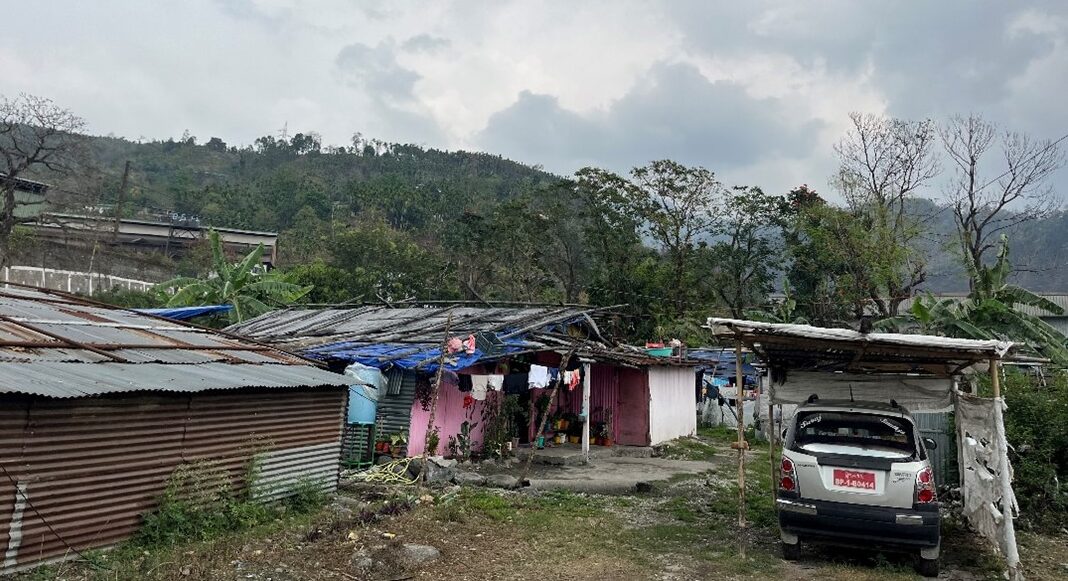
Migrant workers driving development: A view from Pasakha, Bhutan
/
Authors: Nitya Rao, Jelle J. P. Wouters and Choeying Seldon
Pasakha, perched on the Bhutan-India border, is part of Bhutan’s southern industrial belt with close to 40 factories manufacturing a range of products from Coca-Cola and beer to chemicals and steel. This of course requires labour with a range of skills. As the 48 year old local leader, the Tshogpa, told us, the population of Pasakha is over 22,000, of which the sheer majority are migrants, the local voting populace, as permanent residents, being only a mere 150!
‘The locals have little connection with the factories or the workers. They have betel nut farms and engage in poultry and piggery; nowadays also giving rooms and houses on rent to the migrant workers’, the Tshogpa relayed.
The workers hail from all of the 20 districts of Bhutan and are driven to Pasakha by a range of reasons, from devastation due to floods and landslides, a result of climate change, to declining agricultural returns, poverty, and lack of employment opportunities in their source areas. Approximately 90% of them come with their families, given the more regular nature of factory-based employment. Both spouses usually work to earn enough to fulfil their aspirations. Child-care, however, can at times become an issue, and social support networks, especially parents, are called upon to help young couples manage their work and home. We met 60 year old Sonam from rural Chukha, who had come to stay with her daughter and son-in-law to look after the children and home while the couple worked. Shifts often extend to 12 hours, a strategy resorted to in order to maximise earnings with overtime wages. There is no high school or hospital in this locality despite the high population and contribution to the economy. We heard from residents of the temporary settlement adjacent to the Coca-Cola factory that the land had been identified for a hospital, hence no investments were being made there in terms of service provision. High levels of pollution, alongside the threats of floods and landslides, perhaps feed into the complexities of providing government services there.
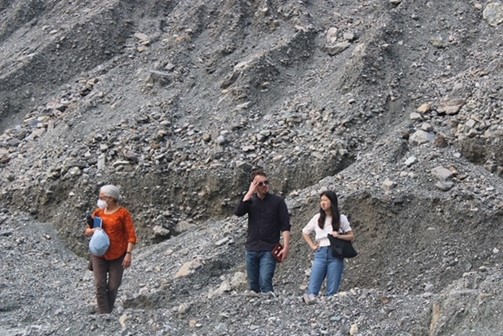
Photo credit : Nima Tshering
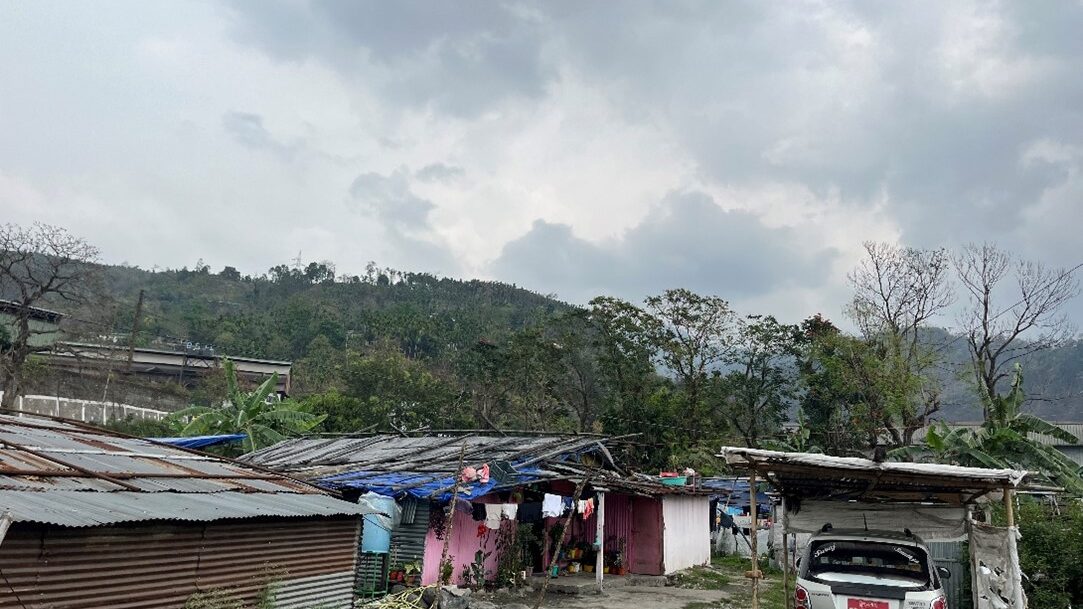
Photo credit: Jelle J.P. Wouters
Interestingly, almost 25% of the migrant workers here, close to an estimated 5000 people, are foreign workers, exclusively from India. The Indian workers are employed at the two ends of the workforce spectrum; highly skilled, mostly male migrants, in the steel industry, who in fact conduct the entire operations required for casting steel on a turnkey basis, and are paid relatively well, at one end, and daily casual workers, performing manual, unskilled jobs from cleaning public spaces and breaking stones to petty work in shops and restaurants, on the other.
Over 500 Indian men are employed by Lhaki Steel, recruited and paid through contractors. They bring with them a range of skills from operations management to fitting. While recruited for three years, their work permits must be renewed each year as per the Bhutanese rules. This process involves medical check-ups, drug tests, and other forms of compliance. The workers we spoke to had experience of working in many countries but liked Bhutan due to its closeness to their homes in UP and Bihar states of India, the decent wages, good enforcement of law, ability to travel home when needed, provision of decent housing, transfer of money directly to their bank accounts at home by the contractor, amongst other reasons. Because Pasakha is located immediately on the border, their Indian SIM cards were also operational, allowing them to benefit from cheaper calls and data rates to connect with their families. Visiting the apartment of five Indian labourers, an apartment provided to them free of cost by the factory, we observed several empty liquor bottles stacked in the corner of their living room – perhaps the only form of relaxation for five men, staying together for several months, working in shifts and managing their domestic chores as well. In fact, previously much of the staff housing was on the premises of the steel plant, but due to very high levels of pollution and safety concerns, the government notified the factory to provide alternative accommodation for all its workers. The manager of the plant informed us that this process has now been initiated, but it has meant additional costs to the company including providing the workers with transport to and from the factory.
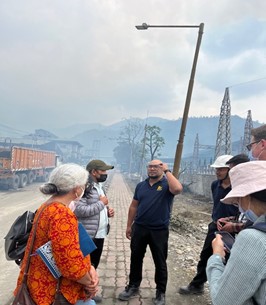
Photo credit: Choeying Seldon
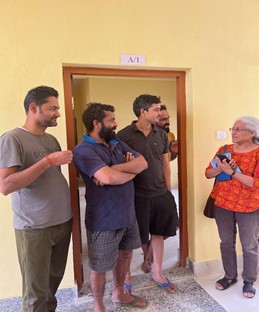
Photo credit: Choeying Seldon
The daily workers, perhaps 80% of the foreign workers, include both men and women, commuting daily through special check-posts set up for them. They all have daily entry passes. Working hours however are restricted for the daily workers to 8-10 hours per day, with entry and exit times, through the Pasakha custom station, regulated to just a few hours each in the morning (6-10am) and evening (6-10pm). A middle-aged woman from Jaigaon, waiting for the contractor to arrive said she had been commuting all her life. She was employed as a cleaner with the Phuentsholing Municipality, arriving at 7am and returning home after 4pm. She knew no other work. Waking up at 4am, she cooked and packed lunches for herself and her school-going children, then crossed the border for work. While her wage was a relatively low 8000 Bhutanese Rupees a month (the same in INR), she found the employment attractive as it was legal; there was no harassment, and wages were paid on time.
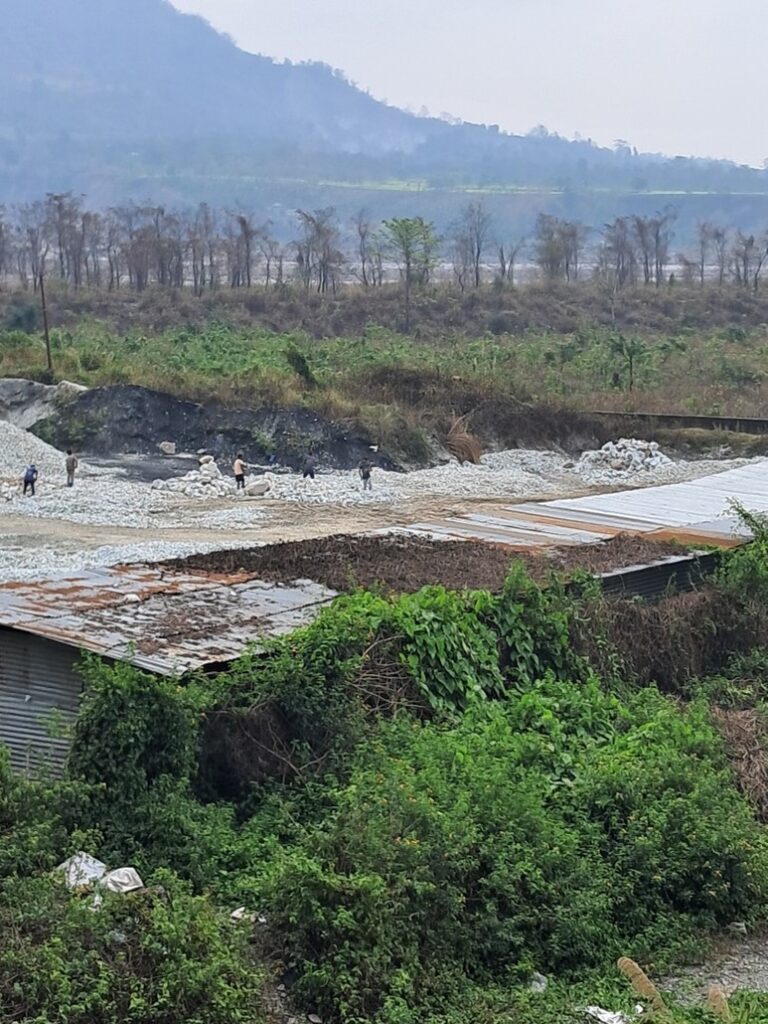
Photo credit: Jelle J.P. Wouters
Bhutan has a small population and with an estimated poverty incidence of 17.8% in 2022 (Bhutan Multidimensional Poverty Index 2022 | MPPN), it fares much better compared to the rest of South Asia. Migrant workers form the backbone of the economy, performing relatively low-paid, manual jobs, which are generally not attractive to the locals, but also bringing in the skills the country lacks. Higher education in the fields of engineering and technology are only now slowly being developed in the country. At the same time, for the migrant workers, the adherence to law and regulation is a major attraction – their work is legal and legitimate, and even when relatively low paid, it remains secure. Migrants are often used to being cheated in other contexts as in the Gulf countries or forced to enter into Europe illegally, with the threat of deportation constantly hanging over them. Bhutan then, offers them a safe destination, one that is not precarious – standing up to its reputation as the land of happiness.
References
Business Bhutan. 2023. ‘Foreign Workers Influx Increase.’ September 1. Url: https://businessbhutan.bt/foreign-workers-influx-increase/
Poussot, Jaquelyn. 2018. ‘Indian Labourers, the Invisible Class of Bhutan.’ LSE South Asia Centre Blog. Url: https://blogs.lse.ac.uk/southasia/2018/01/31/indian-labourers-the-invisible-class-of-bhutan/
Wijunamai, Roderick. 2020. ‘Migrant construction workers in Bhutan: Understanding Immigrant flows and their perceptions.’ Rig Tshoel: Research Journal of the Royal Thimphu College 3(1): 46-57.
Published
CLARE Projects
CLARE Partners

